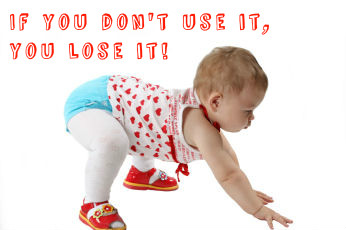The Turkish Get-Up (TGU), one of my favourite movements as it requires & improves mobility; stability; strength; cross lateralisation (right brain communicating with left brain); proprioception; balance AND it feels great to do!
A client of mine who had previously been training in a group setting elsewhere had been told that she couldn’t partake in the TGU portion of the class as she was unable to do them properly. The TGU was one of her goals working with me so we started by breaking down the separate components of the TGU and teaching her brain to learn each phase of the movement using only her bodyweight. At the start she struggled with the initial phase of the TGU (going from lying on your back to propped up on your elbow). This phase requires good reflexive stability through both the Anterior Oblique Sling & Posterior Oblique Sling (Anterior - adductors; same side internal oblique; opposite external oblique & pec minor. Posterior - Lat; Thoracolumbar fascia; opposite side Glut Max).
The TGU predominantly utilises the transverse plane (rotation), taking my client back to basics by retraining rolling patterns significantly improved her initial phase of the Get-Up within the same session. We spent as long as we needed, dedicating about 5-10 minutes of each session, practising the Get-Up until I was happy she was moving smoothly enough to progress onto the next phase. All the other movements chosen for our workout session were geared at feeding the Get-Up.
Now she is able to power through the whole TGU from ground to standing with more fluidity and ease of movement. This is a great milestone for her progression! It also translates over to life, as she has been feeling a lot more flexible and stronger in her day to day life, which for us at moov pt, is more important than anything else!
Being able to assess WHY someone is struggling through a certain phase of any movement and having the ABILITY to apply movement correctives to ENABLE that person to access that phase more efficiently is what we are about at moov pt. Tapping into someone's motor control system to make positive change takes KNOWLEDGE and EXPERIENCE along with an extensive library of corrective exercises.
If you are trying to achieve a complex movement, make sure you break it down into it's individual parts and spend as much time needed on each component to give your brain a chance to learn what you are trying to achieve.






A lot of people own foam rollers but don't know how to use them.
There are a lot of ways to release tension using a foam roller & technique will always come into play.
Best to know the HOW (how to do the movement with good technique) and the WHY (what muscles you are targeting) before letting loose on the foam roller.
We will reveal to you the many different uses for the foam roller as well as the HOW's and WHY's.